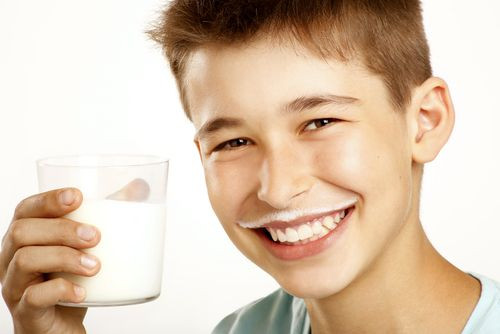Drinking More Milk As A Teen Doesn’t Lower Adult Hip Fracture Risk

“Milk, it does a body good” is a message that has been spoon-fed to American teenagers since the 1980s, but new research from Harvard and Brigham and Women's Hospital suggest higher dairy consumption early in life doesn’t necessarily guarantee better health as an adult.
While health agencies (and Oprah!) still tout milk as great for building bones, the health benefits of milk have come into question in recent years. A 2013 editorial in JAMA Pediatrics argued that low-fat milk has little effect on reducing fracture rates and, somewhat ironically, may make people fatter.
A study published today in the same journal, JAMA Pediatrics, found that drinking more milk as a teen had no effect on a person’s risk for hip fracture during adult life. The results were based on a national survey that started in 1976, and asked over 96,000 nurses, doctors, and other health professionals to recall their milk-drinking habits during adolescence.
Women sustain three-quarters of all hip fractures — given higher female rates of bone-destroying osteoporosis — yet this study found no beneficial or negative trend when it came to hip-fracture risk among women who drank milk.
For men, the results ran contrary to common expectations, with higher milk intake during the teenage years being linked to an increased risk of hip fracture. Each additional glass of milk per day as a youngster increased relative risk by nine percent.
"We did not see an increased risk of hip fracture with teenage milk consumption in women as we did in men. One explanation may be the competing benefit of an increase in bone mass with an adverse effect of greater height. Women are at higher risk for osteoporosis than men, hence the benefit of greater bone mass balanced the increased risk related to height," wrote the authors, who were led by Dr. Diane Feskanich of Brigham and Women's Hospital.
Breaking a hip is a serious injury for the elderly that can often serve as a harbinger of doom. One out of five people with hip fractures dies within in a year, according to the Centers of Disease Control and Prevention.
Most cases involve men and women over the age of 50. In 2010, there were 258,000 incidents, and this number is expected to rise in the future as baby-boomers settle into retirement.
"Dietary Guidelines for Americans 2010 recommends the consumption of three cups of milk or equivalent dairy foods per day to promote maximal bone mass in adolescents. In this investigation, higher milk consumption at this age did not translate into a lower risk of hip fracture for older adults, and a positive association was observed among men," the study concludes.
Source: Feskanich D, Bischoff-Ferrari HA, Frazier AL, Willett WC. Milk Consumption During Teenage Years and Risk of Hip Fractures in Older Adults. JAMA Pediatrics. 2013.
Published by Medicaldaily.com



























